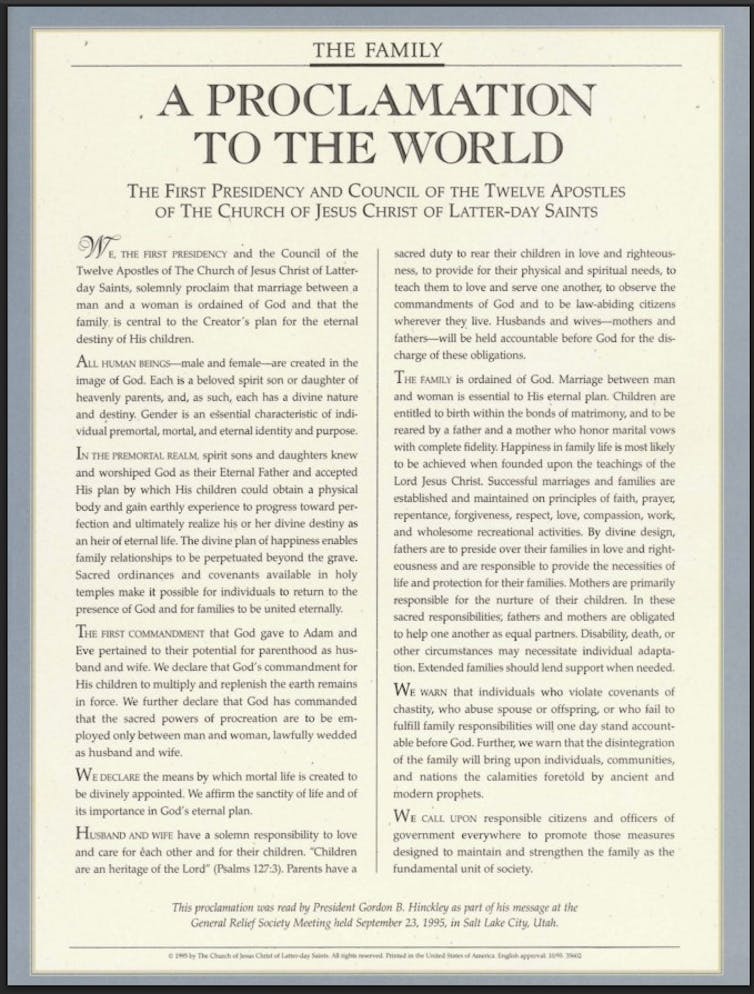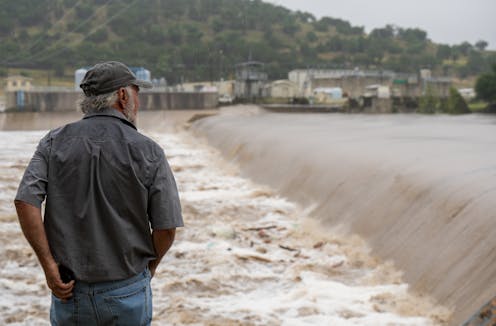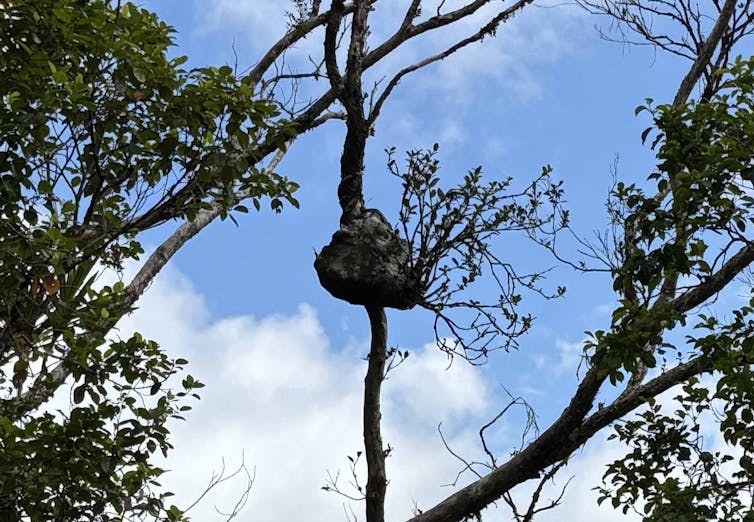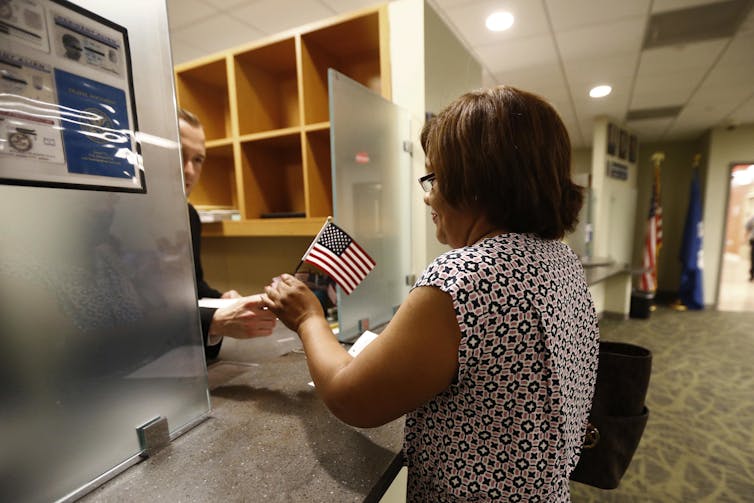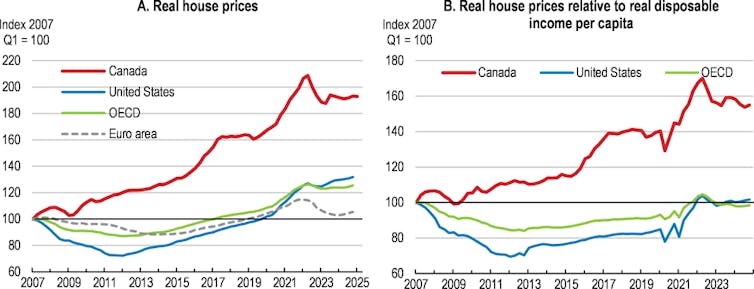Source: The Conversation – Global Perspectives – By Shannon Bosch, Associate Professor (Law), Edith Cowan University
Israel’s Defence Minister Israel Katz has announced a controversial plan to move up to 600,000 Palestinians in Gaza into a designated “humanitarian area” on the ruins of the southern city of Rafah.
Access to the camp would be through strict security screening to ensure entrants were not Hamas operatives. Once inside, the perimeter would be sealed off by the Israeli military. Palestinians would not be allowed to leave.
Eventually the camp would house the entire 2.1 million population of Gaza.
Camp construction would begin during the proposed 60-day ceasefire being negotiated by Israel and Hamas
‘Illegal and inhumane’
The plan is illegal, inhumane and risks worsening the humanitarian crisis in Gaza.
The forced displacement and containment of any civilian population in an occupied territory is a violation of international humanitarian law.
Done on this scale would constitute a war crime and a crime against humanity under the Rome Statute.
The UN Security Council, UN General Assembly and UN Commission on Human Rights have all condemned instances of forced transfer in armed conflicts.
So too, the International Committee of the Red Cross and the Red Crescent, which have stressed the fundamental prohibition of forced displacement of a civilian population and the need for all parties to respect this prohibition.
For their own protection?
Katz is describing the camp as a “humanitarian city”. The Israeli military says Palestinians would only be contained for their own protection.
As we have seen, civilian displacement is prohibited. But there is an exception if a case can be made either for military reasons or the protection of the population.
However, this exception only exists for as long as the conditions warrant for it to exist. Anyone subject to such an evacuation must be transferred back to their homes as soon as possible.
Imperative military reasons never justify the removal of a civilian population in order to persecute it. The Guiding Principles on Internal Displacement entrenches the duty of international actors to avoid creating the conditions that might lead to the displacement of people.
Aid dilemma
Katz has indicated international organisations would be responsible for managing aid and services inside the area.
But Israel has a history of defying even orders from the International Court of Justice to allow humanitarian aid to reach the Palestinians in Gaza.
If international humanitarian agencies were called upon to service the camp, they would face a dilemma.
They would need to decide whether to cooperate in managing aid under conditions that compromise their neutrality and ethical standards, deny basic human rights and are built on violations of international law.
Aid groups would risk being complicit in a process that sets up a transit camp for Palestinians before possibly expelling them from Gaza altogether.
This “humanitarian city” would essentially become an open-air prison. Palestinians would be reliant on international aid under strict Israeli military control.
Mass expulsion?
Could the Rafah camp be a precursor to mass expulsion from Gaza and what does international law say about that?
Katz has been quoted saying Israel aims to implement “the emigration plan, which will happen” – meaning Gazans will eventually be forced to leave for other countries.
Changing the demographic composition of a territory – ethnic cleansing – achieved through the displacement of the civilian population of a territory is strictly prohibited under international law.
The idea of displacing Palestinians has long been part of Israeli strategic thinking, but this announcement signals a dangerous escalation and intention to permanently alter Gaza’s demographic landscape through displacement and containment.
Voluntary exodus?
According to Katz, Gazans would have the option of “voluntary” emigration.
Indeed, speaking at the White House this week, Prime Minister Benjamin Netanyahu said there would be no forced exodus from Gaza:
If people want to stay, they can stay, but if they want to leave, they should be able to leave.
But the scale of the humanitarian crisis in Gaza is incomprehensible.
The population has been displaced multiple times and 90% of homes in Gaza are damaged or destroyed. The healthcare, water, sanitation and hygiene systems have collapsed.
On average 100 Palestinians are killed daily as they try to access food.
These crisis circumstances negate the voluntary nature of any person’s consent to either the transfer to the Rafah camp or ultimately, the departure from Gaza.
According to Amos Goldberg, historian of the Holocaust at the Hebrew University of Jerusalem, what the defence minister laid out was clear plans for the ethnic cleansing of Gaza:
[it is] a transit camp for Palestinians before they expel them. It is neither humanitarian nor a city.
![]()
Shannon Bosch does not work for, consult, own shares in or receive funding from any company or organisation that would benefit from this article, and has disclosed no relevant affiliations beyond their academic appointment.
– ref. Israel’s Rafah camp – ‘humanitarian city’ or crime against humanity? – https://theconversation.com/israels-rafah-camp-humanitarian-city-or-crime-against-humanity-260809




